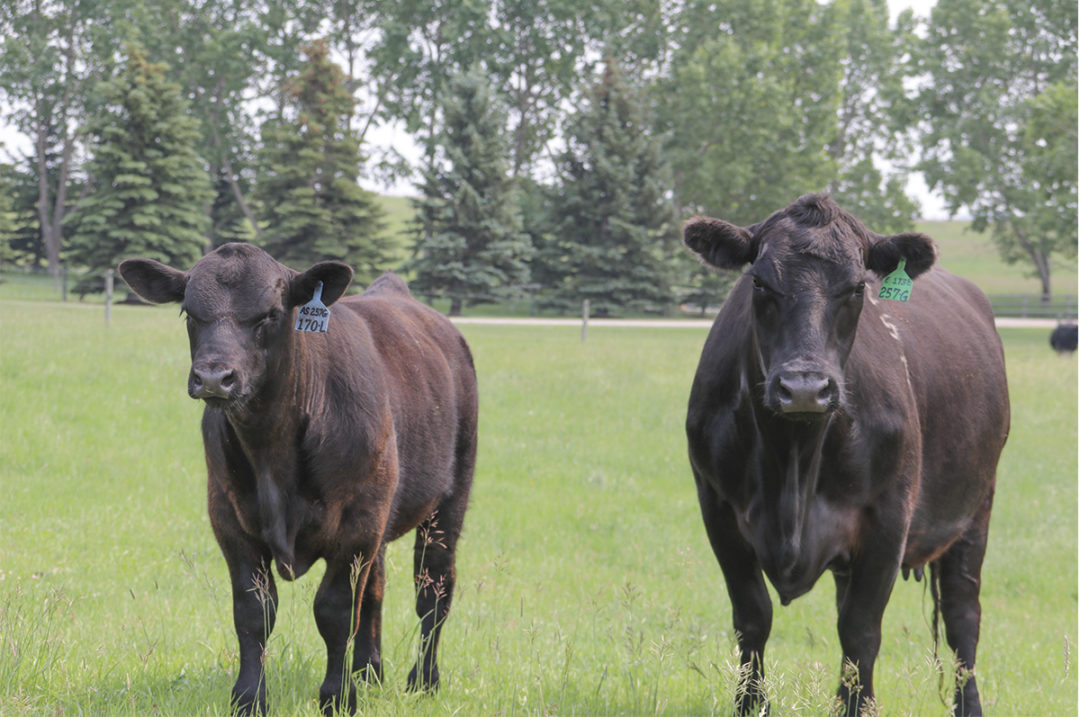High weaning weights, a uniform calf crop and a high calf crop percentage are every cow-calf producer’s goal to obtain the highest profit margin. Genetics combined with management is integral to achieving these goals. Genetics entails hybrid vigor, expected progeny differences (EPDs) and line breeding without inbreeding. Management entails record maintenance, adequate nutrition and a proper breeding program. All these efforts combined establish a productive herd, yet applying these strategies can be challenging. A way to implement genetic improvement as well as reproduction management improvement together is using the strategy of embryo transfer (ET).
Many producers use artificial insemination (A.I.) to genetically improve their herd. This is a common practice, as valuable bulls’ genetics can be introduced into a herd for a lesser cost than buying a bull. ET has the same benefits as A.I. but compounds the genetic improvement by selecting desired genetics from not only sires but the mothers as well. In addition, fewer semen straws are utilized using ET because one straw is used to make many embryos.
The process is relatively simple. A cow produces eggs, or oocytes, in the ovaries. Once every 21 days, a single one is released through ovulation, even though many are grown continuously. Ovum pickup (OPU) is a safe method to aspirate or collect multiple eggs from the ovaries. It works by a transrectal ultrasound guiding a transvaginal needle to synthetically “ovulate” all the follicles that each ovary produces, then aspirating or flushing with saline to suction and obtain these eggs into vials. The vials of saline and follicular fluid are put under a microscope to look for the oocytes. These oocytes are graded for quality and made into embryos a day later using in vitro fertilization (IVF). OPU is performed on females with high genetic potential to propagate the genetic progress to the entire herd. Embryos are then transferred to recipient cattle in the herd.
Embryo transfer involves synchronization of the estrous cycle. This is what enables embryos to be implanted in the same interval, allowing for calves to be delivered in a shorter window of time. This decrease in the calving interval in turn decreases the number of days cows are open. The synchronization protocol involves two intramuscular shots of prostaglandin F2-alpha – the first shot 21 days before transfer and the second shot nine days before the transfer. Seven days before the ET date is when the recipient cattle should come into heat. When fertilization occurs naturally, fertilization occurs in the oviduct, then the embryo travels to the uterine horn to hatch from the outer lining of protective cells, the zona pellucida, and elongate into a conceptus, which will implant on the uterine lining. Since in vitro embryos are grown in the lab, in order to mimic the natural process, the embryo is transferred to cattle on day 7 into the uterine horn on the same side of the ovary where ovulation occurred. When transferred fresh, embryos have around a 65% success pregnancy rate. Best results are seen when paired with a cleanup bull after transfers. These calves will be about 21 days younger, so making records of offspring is possible. This process allows for a calving interval around 42 days, which is ideal.
ET helps achieve multiple offspring from the top producers in your herd. This is where pairing cows with their calves and maintaining records on weaning weights becomes pertinent. Out of the cows bred to the same bull, the cows that produce calves with the highest weaning weight year after year should be used as oocyte donors. These cows with the best genetic potential have their value maximized, as they can produce more than one calf per year. OPU and ET allow injured cattle that are unable to carry a pregnancy, already pregnant cattle in the first trimester of pregnancy and recently deceased cattle to develop more offspring, increasing their potential value. The generation interval can be shortened rapidly, increasing genetic improvements by collecting oocytes from heifers that have not yet attained puberty. A growing need for the technology is beef embryos carried by dairy cattle, as less land is devoted to cattle grazing and the need for a viable source of animal protein with the growing population increases. Lesser-known breeds of cattle that reside in different regions of the globe utilize transportation of frozen embryos because it is easier and cheaper to transport an embryo across an ocean than it is a cow.
Genetics such as weaning weights for terminal calves, maternal traits for replacement heifers and whatever else for which you are selecting in your herd can be improved on both the sire and dam lines with ET. Similar to A.I., a cleanup bull after embryo transfer in your cow herd can be used to shorten the breeding season and to produce a more uniform calf crop.









